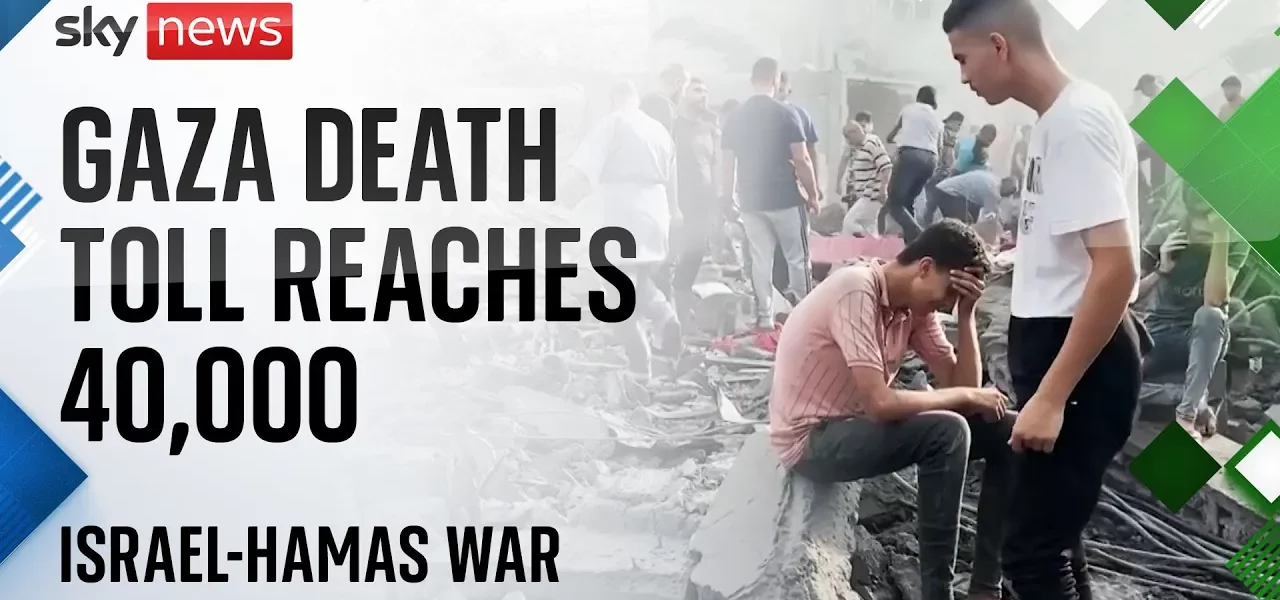40,000 Palestinians Killed in Israel Gaza War: An In-Depth Analysis

This article explores the devastating impact of the ongoing conflict in Gaza, examining the reported casualty figures and the complexities surrounding the data collection amid a humanitarian crisis.
Introduction
The Israel-Gaza conflict has escalated dramatically over the past ten and a half months, with reports indicating that around 40,000 Palestinians have lost their lives. This staggering figure, released by the Gaza Health Ministry, is heavily disputed by the Israeli government, leading to questions about its accuracy and the challenges in collecting reliable data in a war-torn region. The humanitarian implications are profound, as the world grapples with the realities of civilian losses and the ongoing violence that has devastated the region’s infrastructure.
Understanding the Casualty Figures
The reported death toll of 40,000 Palestinians is a grim milestone in the ongoing conflict. However, the complexities surrounding these figures raise significant concerns regarding their reliability and the methodologies used to compile them.
Disputed Figures
The Israeli government has disputed the death toll provided by the Gaza Health Ministry, which claims a substantial percentage of the casualties are civilians, including women, children, and the elderly. The lack of independent verification from journalists and investigators, who have largely been barred from entering Gaza, complicates the situation further.
Casualty Recording System
Initially, the Gaza Health Ministry employed a meticulous system for recording casualties, which included detailed lists of deceased individuals. However, as the conflict progressed, this system faced significant challenges:
- Infrastructural Damage: Over 59% of buildings in Gaza have been damaged or destroyed, severely impacting the health infrastructure.
- Data Reporting: As of March, only three of Gaza’s eight major hospitals were actively reporting casualty data.
- Unidentified Bodies: A staggering 81% of recorded deaths were unidentified, highlighting the chaos and destruction.
The Role of Hamas in Health Reporting
Given that the Gaza Health Ministry is run by Hamas, there are inherent biases and challenges in the data reported. The complexities of military conflict and governance significantly affect health reporting in the region.
Innovations in Data Collection
To adapt to the deteriorating situation, the Gaza Health Ministry has implemented new processes to document deaths:
- Online Death Certificates: Families can now submit forms online to validate deaths and obtain certificates.
- Judicial Validation: A judge must validate the death if a body is reported as having arrived at a hospital, which allows for better accuracy in counting fatalities.
Ongoing Challenges
Despite these efforts, many individuals remain unaccounted for, and the focus remains heavily on trauma-related deaths, potentially underestimating other forms of mortality.
Indirect Deaths and the Humanitarian Crisis
The implications of the conflict extend beyond immediate casualties, as indirect deaths due to lack of medical care, malnutrition, and psychological trauma continue to rise. The IDF has indicated a lack of comment on the reliability of the Gaza Health Ministry’s figures, reiterating that the organization is governed by Hamas, which casts doubt on the accuracy of reported numbers.
Unseen Toll of the Conflict
With many bodies still trapped under rubble and the conflict ongoing, it is likely that the death toll will surpass the already staggering figures reported. The international community faces the challenge of addressing both immediate needs and the long-term implications of such extensive loss of life.
Conclusion
The Israel-Gaza conflict has resulted in a catastrophic humanitarian crisis, with reported casualties reaching approximately 40,000 Palestinians. The reliability of these figures remains a contentious issue, influenced by the political and military dynamics at play. As the situation evolves, it is crucial for the international community to advocate for humanitarian access, support efforts to document casualties accurately, and address the broader implications of such a devastating conflict. We encourage readers to stay informed and support organizations working to provide aid and relief in the region.
“`




